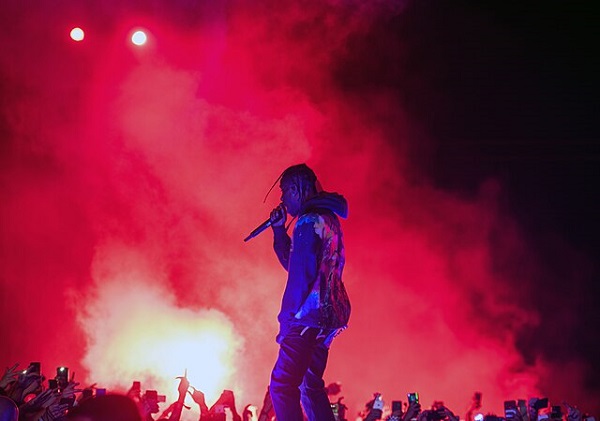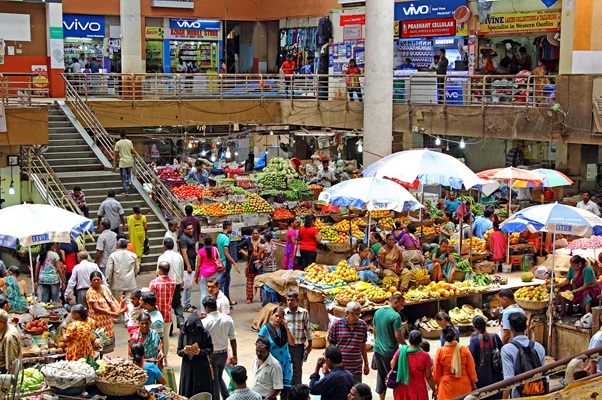.png)
When Infrastructure Kills the Vibe, Ambition Turns Up the Volume
When the system stumbles, the spirit doesn’t. From FDI to festivals, India’s rhythm keeps rewiring itself for the next act.


Phynix is a seasoned journalist who revels in playful, unconventional narration, blending quirky storytelling with measured, precise editing. Her work embodies a dual mastery of creative flair and steadfast rigor.
October 19, 2025 at 12:55 PM IST
Dear Insighter,
Michael Debabrata Patra sees a storm—and a stage. The former RBI Deputy Governor argues that Donald Trump’s tariff tantrums could end up fueling a surge of foreign investment into India. Protectionism, he suggests, might paradoxically push global capital our way. His logic is simple: if the U.S. builds walls, India builds doors. With a 100-day action plan spanning minerals, semiconductors, and space, we could ride the next FDI swell like a headliner wave.
It’s a seductive vision. Yet it’s hard to square that ambition with what’s happening on the ground—where we still can’t run a concert without chaos.
Take Travis Scott’s Delhi debut. The show was sold out, the hype was biblical, but the spark never really caught. The standing zones were alive, but the seats stayed still, like they were watching something on mute. Water ran out. Delays stretched. Somewhere in the chaos, fans kept dancing. Others, meanwhile, just wanted out. The exit queues moved slower than the setlist.
Just days before, The Smashing Pumpkins scrapped their India tour, blaming “logistical issues.” It’s a familiar story. Coldplay, Guns N’ Roses, Ed Sheeran, Green Day — all came, all played, all left behind the same chorus of complaints: endless lines, inadequate infrastructure. Even Diljit Dosanjh had a moment last year when he swore off performing in India until things got better. He’s since softened the stance, teasing an “India Tour 2026,” but the frustration was real. The concert economy is booming, sure, but the system running it keeps tripping on its own wires.
And that’s the perfect metaphor for the larger economy: ambition headlining, logistics lagging, energy colliding with inertia.
We could laud India’s vibrant startup ecosystem, but we still can’t get bottled water to a concert crowd on time. Maybe Reliance has the answer. As Krishnadevan V writes, the conglomerate just launched Campa Sure, a cut-price bottled-water brand—₹15 a litre, ₹25 for two—rolling out through local bottlers and the muscle of Reliance Retail and JioMart. Maybe they should start with the next Travis Scott gig in Mumbai?
But water isn’t the only thing drying up. After a brief recovery, India’s job market has slipped again, reports Akshi Chawla. Unemployment nudged up to 5.2%, and the gender gap widened as female unemployment hit 5.5%.
Meanwhile, the RBI’s same-day cheque clearing plan, meant to drag banking into real time, stumbled barely a week after launch. Cheques are taking a week to clear, observes Mint Owl.
Yet the RBI keeps tinkering with its dials. As the BasisPoint Groupthink column observes, the Reserve Bank Executive Director Indranil Bhattacharyya's first statement as a voting member of the Monetary Policy Committee carried all the hallmarks of an RBI insider: technically sound, institutionally cautious, and carefully worded to signal continuity more than conviction. His vote to pause felt less like individual judgment and more like the system reaffirming its instinct for restraint.
The system is wobbling elsewhere too. The new ECB framework, as Babuji K warns, is opening the gates to unhedged foreign debt: $65 billion worth, one rupee-slide away from pain. Meanwhile, Rahul Ghosh explains that the RBI's alignment to Basel-III capital requirement norms will free up more money to be lent to MSMEs and NBFCs. But while banks are mandated to make granular disclosures about their industry exposures, retail business exposure gets clubbed together.
The RBI is also allowing Emirates NBD to buy a majority stake in RBL Bank for $3 billion, marking the largest-ever FDI in India’s banking sector. As Mint Owl observes, the RBI is more receptive to foreign capital in the banking sector, proving that prudence and progress can coexist. Maybe foreign banks can navigate our regulations better than foreign bands can navigate our logistics.
Nilanjan Banik argues that strategic disinvestment is the next act in India’s reform show—Prime Minister Narendra Modi’s own “no business to be in business” mantra could unlock serious value.
Even vegetables aren't immune to policy confusion. G. Chandrashekhar argues that locking vegetable oil tariffs for years would rob policymakers of flexibility, harm consumers and farmers, and chiefly benefit refiners.
Globally, the soundtrack is shifting. The dollar is back on top. Political turmoil in Europe and Japan, plus a genuine U.S. productivity revival, has turned the greenback into the safe-haven headliner once again. As Yield Scribe puts it, the dollar isn’t winning because it’s flawless, but because everyone else is off-beat.
No wonder central banks are hedging with gold. Srinath Sridharan calls it “memory against fiscal amnesia”. It’s a reminder that when the music stops, the only thing that holds value is what already stood the test of silence.
But innovation still struggles to find its tempo. India ranks 38th in the Global Innovation Index 2025, up from 48 five years ago. Progress, yes, but as Sharmila Kantha points out, our R&D investments are still too timid, leaving us watching the global tech parade instead of leading it.
And as TK Arun warns, our AI dreams may be powered by coal, not code. Google’s $10 billion, 1 GW data-centre project in Visakhapatnam could quietly tilt the grid back toward fossil fuels. Hemachandra Padhan argues for a different rhythm—one where net-zero and women’s empowerment redefine India’s aviation and energy future by 2047.
India's crypto market is also booming without clarity. N. Srinivasa Rao points out that according to the 2025 Global Crypto Adoption Index by Chainalysis, India ranks first across all major metrics, with crypto transactions exceeding $172 billion and more than 107 million users. It’s an extraordinary contradiction: a country driving global adoption of an asset class that it hasn't yet formally accepted. But Joseph Rai notes that CoinDCX's fresh funding from Coinbase marks a surprising comeback, hinting at a cautious thaw after years of regulatory frost.
Politics, of course, remains the loudest genre of all. In Bihar, Amitabh Tiwari notes that caste is “cast in stone,” shaping 90% of constituencies. Amitajeet Batabyal cites research by Anirban and Shabana Mitra, which finds election-time spikes in household consumption, a data-driven echo of vote-buying that refuses to fade.
And in the middle of this noise, Srinath Sridharan cuts through the feedback: India’s future won’t be built by centrists seeking balance, but by leaders willing to take sides with conviction, not caution. Centrism as comfort is just indecision in disguise.
Leadership choices are critical across industries. K. Srinivasa Rao notes that when the government opened PSB positions to private-sector leaders in 2015, the response was lukewarm, and their tenures ended without noticeable operational changes. The support structure, he argues, must effectively translate top-down leadership into measurable outcomes.
So here we are again, somewhere between the bass drop and the blackout. The crowd’s half-moving, half-waiting. For a minute it all makes sense, then it doesn’t. That’s pretty much the story, isn’t it? Some keep dancing, some just want a drink, and plenty are busy filming the mess for Instagram.
That’s India in reels: the ambition loud, coordination still finding its feet. The song itself is fine; we just haven’t learned to move together yet.
Until next time, offstage but listening.
Also Read:
- Myth of Currency Debasement by V Thiagarajan: Markets often mistake monetary flexibility for monetary decay. The greater risk lies in misreading cycles as signs of systemic erosion.
- Will India's Ban on Online Money Games Work? Or Will It Meet the Same Fate as Liquor Prohibition by Rajesh Mahapatra: Vedika Pandey decodes the draft rules for regulation of online gaming.
- Genome Editing: A Quiet Revolution in Indian Rice Fields by G. Chandrashekhar: Indian scientists are quietly rewriting the genetic code of rice, with early field trials promising higher yields and greater climate resilience.
- Mission Pulses: Does It Pack The Protein Punch India Needs? by Rajesh Mahapatra: G. Chandrashekhar explains what it would take for the Pulses Mission to make India self-sufficient in pulses production.
- The 2% Vegetarian: Misunderstood, Mis-fed, and Mildly Irate by Kalyani Srinath: A reflection on the forgotten 2% of vegetarians who crave imagination and respect in their meals, not beige monotony.
- Gen Z Isn't "Quiet Quitting," It's Loudly Course-Correcting Its Economic Future by Kirti Tarang Pande: Boomers built with burnout. Gen Z is building economic resilience.
- The Anatomy of a Digital Arrest Scam by Prakhar Rai: Digital arrest scams thrive at the intersection of psychology, technology, and institutional gaps, preying on fear and trust.
- The Invisible Frontline: Cyber Wars And India's Digital Destiny by Lt Gen Syed Ata Hasnain: With cyberattacks now striking our financial, military, and governance networks, the new frontier of national security is in cyberspace.
- Trump's Destruction of Maritime Law Raises the Risk of War by Guy Standing: US President's order can lead to conflicts in the high seas and prove to be an ecological disaster.
- Afghanistan Standoff: The Shifting Sands Of Pakistan's Strategic Depth by Lt Gen Syed Ata Hasnain: Pakistan's long-cherished notion of strategic depth in Afghanistan has collapsed as India reclaims moral and strategic space.



